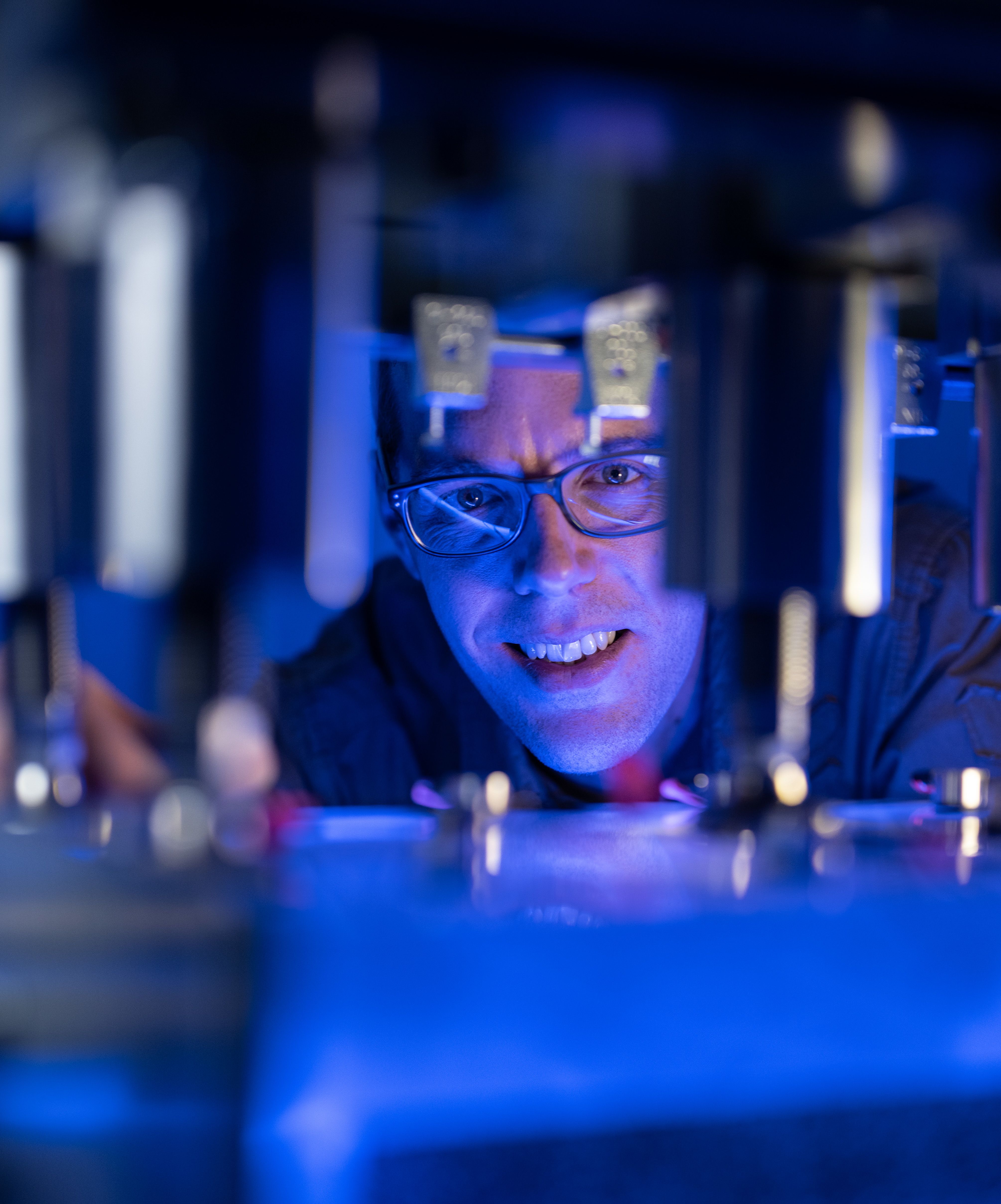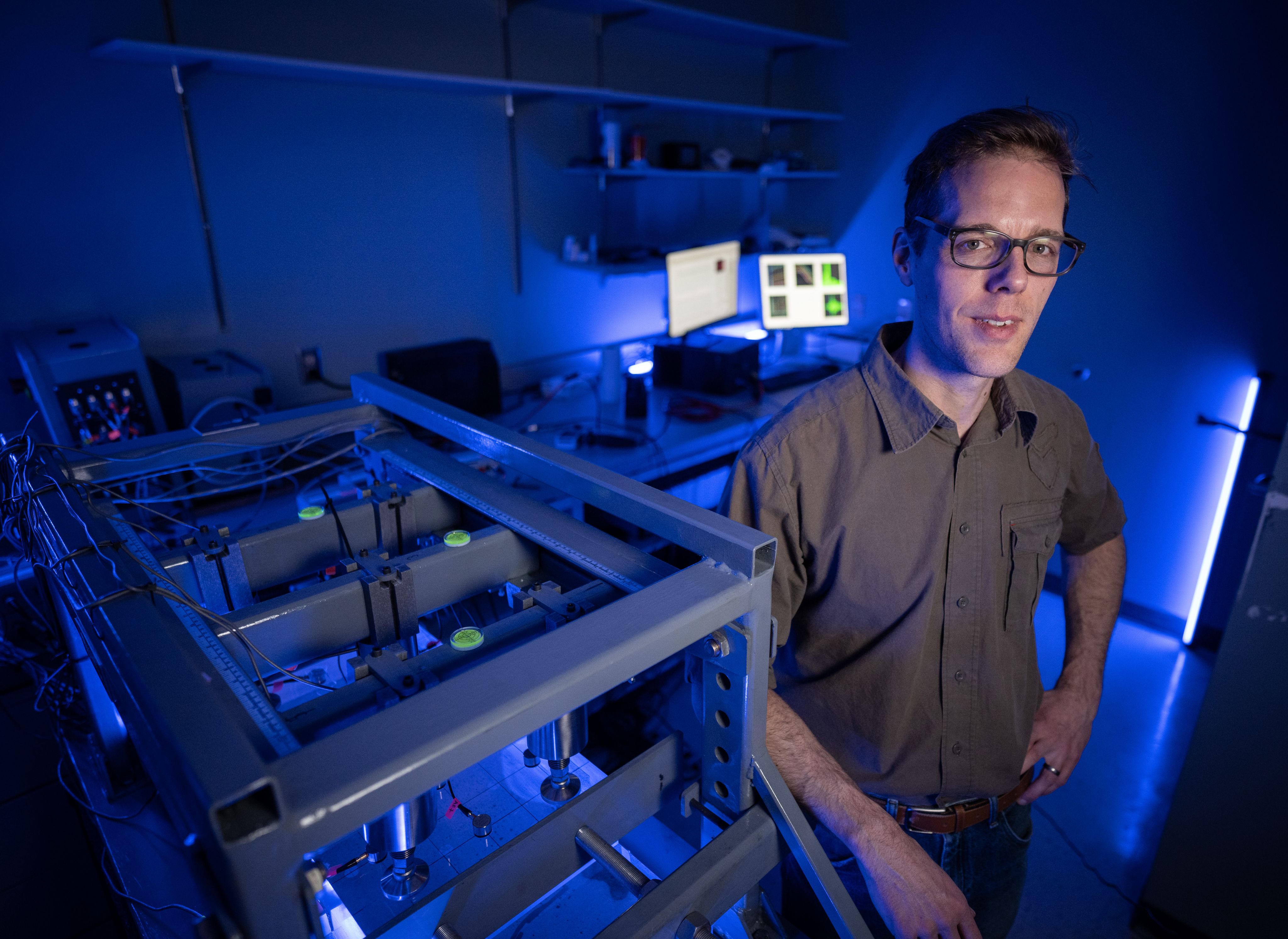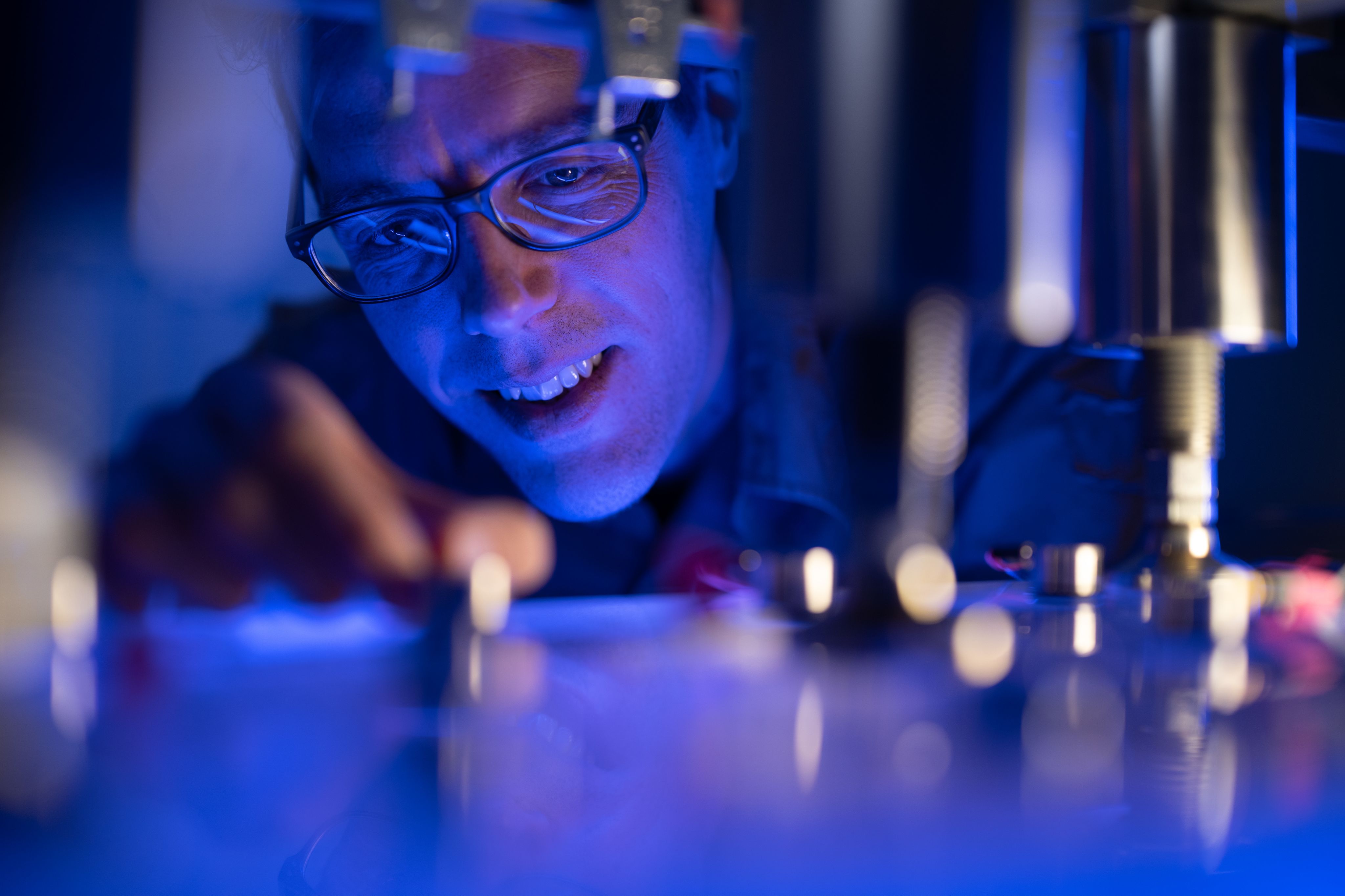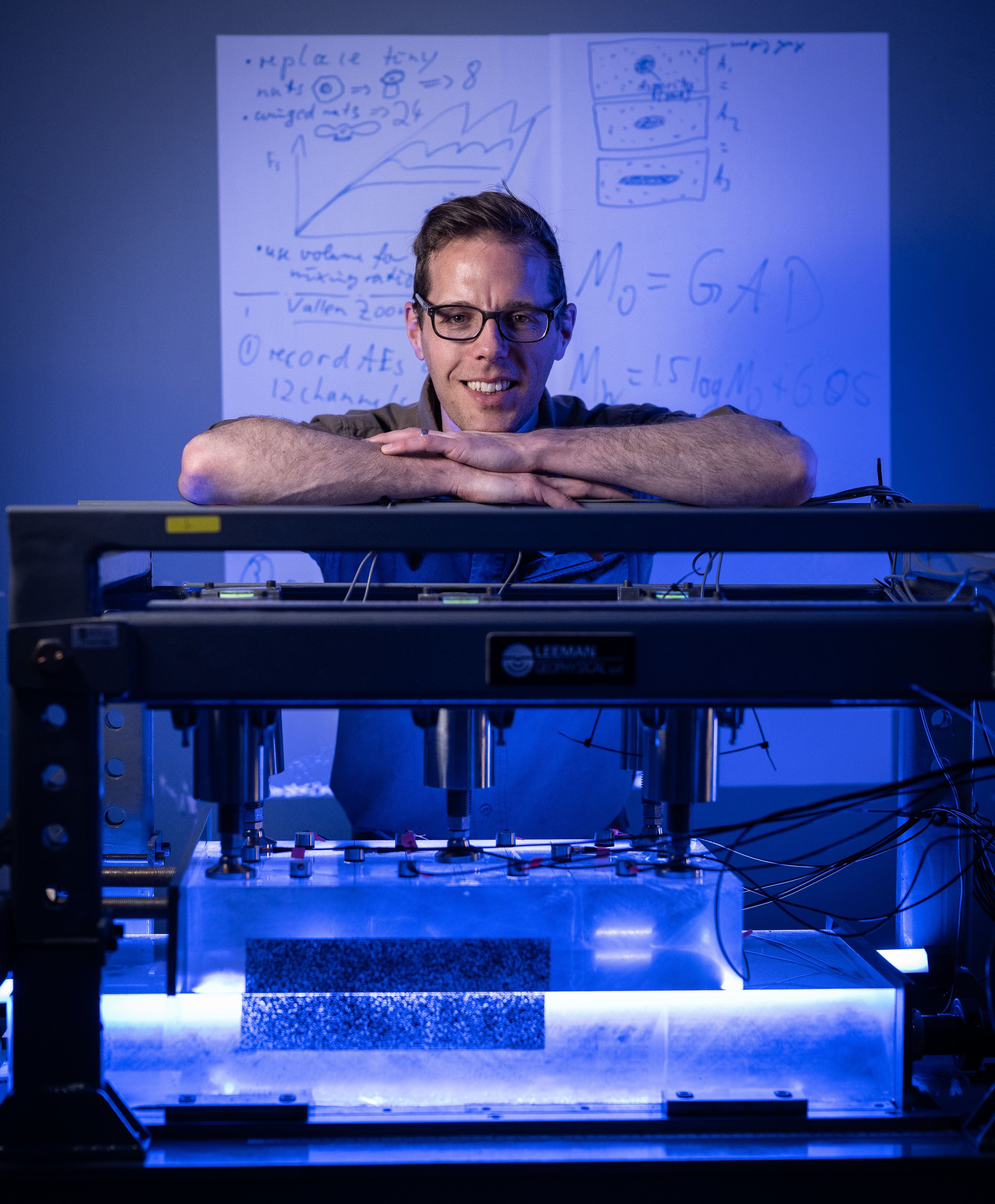Dr. Thomas Goebel


Dr. Thomas Goebel
Dr. Thomas Goebel’s Research in a Minute is focused on the analysis of induced seismicity, fault structure and earthquake source processes.



An assistant professor in seismology at the Center for Earthquake Research and Information, Goebel aims to improve the documentation of fault hydrology and crustal stresses using laboratory experiments, analytical and numerical models and statistical analyses.
At a larger scale, he is interested in what controls earthquake behavior and interaction. The significance of this work, particularly lab experiments, helps us understand the difference between earthquakes — foreshocks, mainshocks and aftershocks. The goal is to better predict and prepare for earthquakes.
“We connect our observations from the natural system to laboratory scale experiments to explore the underlying physics and try to understand the overall earthquake frequency in an area,” Goebel said. “This informs how we should adjust our infrastructure and building codes. All of this requires a more in-depth physical understanding of the underlying processes.”
In addition to scientific research, Goebel’s current and former roles include science communication and outreach through news outlets, scientific articles and conference presentations. His work is further enriched through teaching programming and data analysis classes to undergraduate and graduate students as well as through advising and mentoring.



